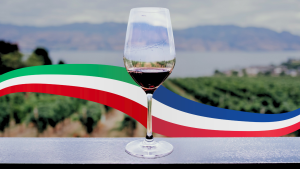The new OSS (One Stop Shop) regime, effective July 1, 2021, at the intra-community level, establishes new rules for the transfer of goods between EU member states. Distance sales activities between EU member states facilitated by e-commerce platforms in B2C relations—meaning all sales of goods from wineries to private consumers—are treated similarly to mail-order sales.
The new regulation aimed at simplifying VAT compliance for businesses selling goods to end consumers throughout the EU allows for electronic registration for VAT payment in a single country for the remittance of all VAT due for the sale of goods in any other EU member state. This way, the tax owed can be paid directly in Italy from one’s winery through the OSS portal, without needing to remit it physically in each EU country where sales to end consumers have taken place—depending on the thresholds set for each country.
The old procedure, now simplified by the implementation of the new OSS regime, which avoids exorbitant costs as well as unnecessary time losses, required VAT identification for each country where sales were made, along with the opening of a VAT number and VAT declaration for each individual country.
With the new optional OSS regime, it is possible to apply VAT either from the seller’s country of residence or from the country where the sale of the goods took place for sales thresholds under €10,000 on an annual basis. The threshold is calculated based on the seller’s turnover realized in the previous calendar year within the EU, excluding VAT. Once this threshold is exceeded, the winery is obligated to adhere to the OSS regime and remit VAT in the country of sale for goods sold via e-commerce. For convenience, they can opt right away for taxation in the destination country without considering any sales threshold to avoid double taxation.
For wineries to join the OSS system, it is sufficient to send a notification to the Revenue Agency. Once the registration is submitted, a communication to the Revenue Agency is required via the quarterly OSS VAT declaration, detailing the total amount of distance sales made at the intra-EU level, separately for each country where the tax is due and broken down by rates, excluding VAT.
For sales made through e-commerce, the winery is currently not required to issue any invoices (unless requested by the customer), nor to provide a receipt or ticket for the payment, and it is not obligated to store and transmit payment data. The only obligation for the winery remains the daily registration of the sale in the sales register.
Alternatively, the e-commerce operator may choose to issue an electronic invoice.
Direct from Italy, with the new DFI Excise Plug-in that integrates into the e-commerce platforms of wineries, has opted from the outset for adherence to the OSS regime with sole taxation in the destination country. This choice aims to promote maximum convenience and transparency for the end consumers of the winery.
The system, closing the loop between customs, logistics, and the winery, makes all the tax and bureaucratic obligations required for B2C sales abroad through the winery’s e-commerce extremely practical.
Let’s now consider a typical situation where a customer buying from abroad encounters a different price for their favorite bottles once the annual threshold of €10,000 is exceeded.
By deciding to first apply Italian VAT and then that of another EU country, there is a risk of confusing the end consumer, who will suddenly find varying prices with different VAT rates on the winery’s e-commerce.
Moreover, if the customer is German, applying Italian VAT will result in them paying more for the same bottle due to the difference between the two rates, which are 19% in Germany and 22% in Italy…
The decision to adhere from the outset to taxation solely in the destination country will undoubtedly make all tax-related matters for selling abroad to private individuals through e-commerce much more manageable.
For the settlement of taxes under the OSS regime, wineries will receive a quarterly Excel report—broken down by country—indicating the corresponding VAT that the winery is required to pay. This way, the VAT will be paid by the winery by accessing the OSS portal via SPID. They will then proceed to directly input the VAT due into the portal by simply copying and pasting the data we provide.
Starting in March 2023, the obligation for electronic transmission of payment data has been reinstated. The plug-in that will be provided to you is already equipped to meet this regulatory requirement.



